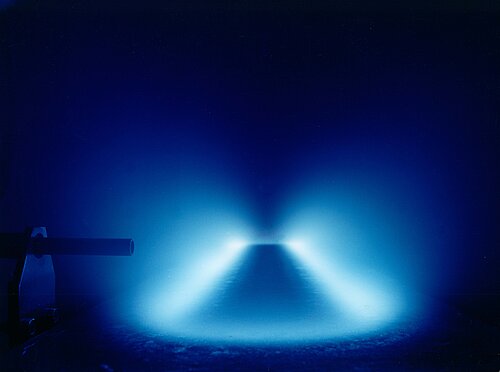The process control of sputter processes has a long history and many sensors and approaches have been studied and employed. But how has it been developed and why is it so important?
It all started in the 1980ies. Then, the focus was on individual processes that required special attention. An example is rate improvements of reactive Ti or Si sputtering, especially in the early days when only planar targets were available. Typically, this was accomplished with Plasma Emission Monitoring (see image). For the detection of oxygen partial pressure and relative pressure control, lambda probes were employed to stabilize process drift and maintain stable working points. Such control and sensing systems have matured and improved over the years. Nowadays, very stable and robust control systems are available from various suppliers.
Since the 2000's, simulation tools have been involved. The aim here was not just to develop and reverse engineer coating stacks, but to gain a better understanding of the optical properties of coatings and its dependence on magnet field strength, process gas trimming and deposition rate triggered the development of tools that predict the most suitable process adjustments.
Since the 2010's, software-based solutions for controlling sputter processes have been available. Examples are the BREIN software of Wolfgang Theiss as well as the On-line Trim&Shim tool of VON ARDENNE. These products enable much quicker process adjustments compared to traditional step-by-step/trial-and-error approaches.
Today, the attention is shifting towards solutions that improve the efficiency of the entire coating process rather than individual steps. Coatings have developed into a commodity in industrial production. Thus, producers must emphasize the efficiency of cost and resources. Energy, labor, raw materials and machine uptime are key to succeed in this competition. Therefore, complex control algorithms are employed. They do not simply control individual processes, but rather full coating stacks and complex transition between different machine states.
We are now able to take the next step in automation with advanced software solutions:
Automated determination of working points in reactive sputtering, not only for single but also multi-magnetron set-ups
Closed loop control of optical performance of full coating stacks
Automated transition between different machine status (maintenance, idle, product 1, product 2, etc.)
In the future, the wealth of data in and around the production equipment will be exploited to enable even more difficult tasks. Thus, we will be able to predict the best possible maintenance scope and date. And we will correlate vast arrays of data to better understand failure modes and reduce losses.
Ultimately, we might use artificial intelligence to set up digital twins of our production environment to predict process optimization with even more accuracy. This will reduce costs by avoiding learning experiences that would require difficult hardware adjustments.
If you would like to know more about process control system and digital solutions at VON ARDENNE, you will find more information here.

![[Translate to English Global:] VA PROCESSMASTER](/fileadmin/_processed_/3/c/csm_VON_ARDENNE_article_VA_PROCESSMASTER_2d0e5c7a02.jpg)